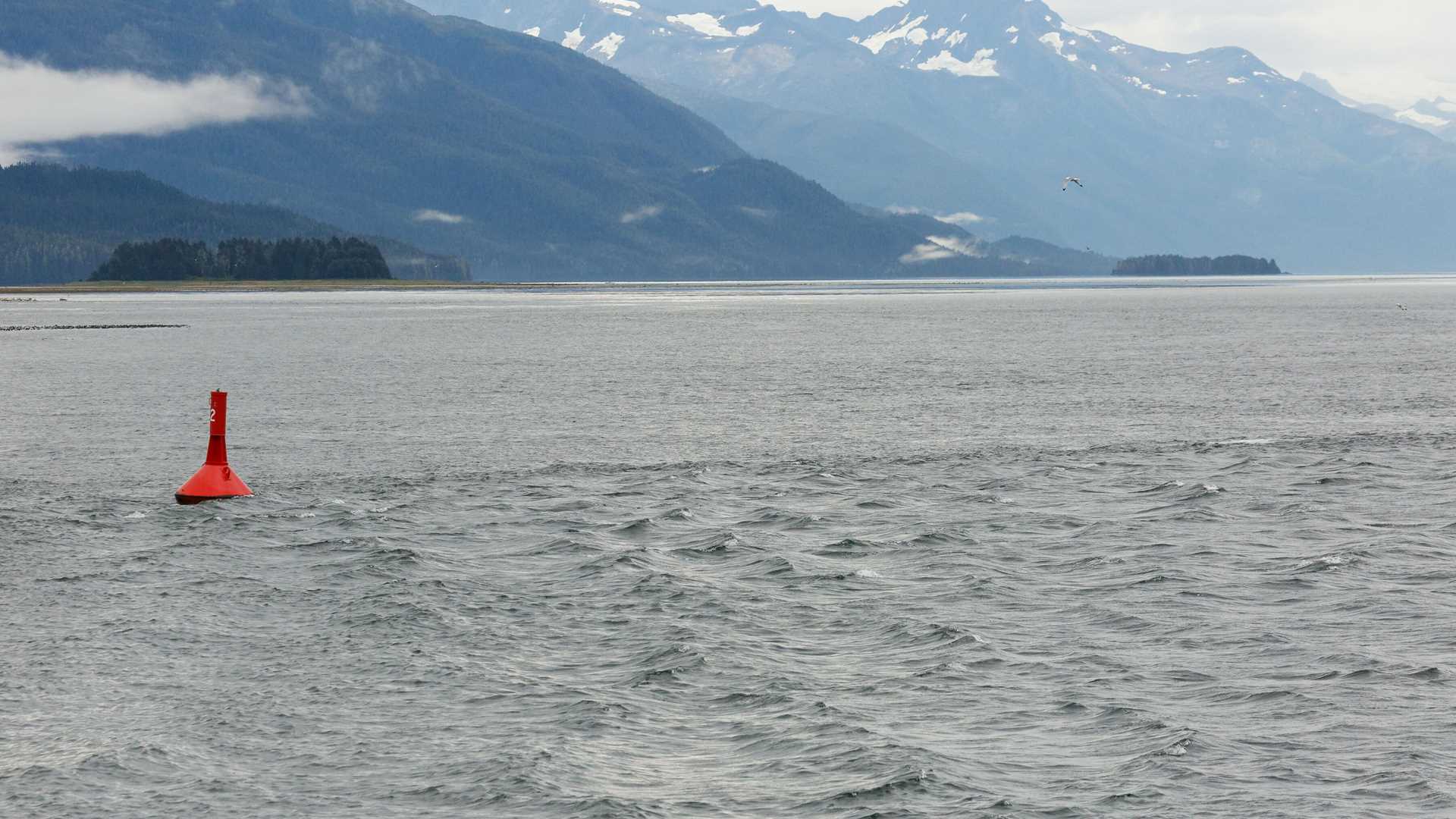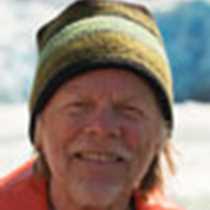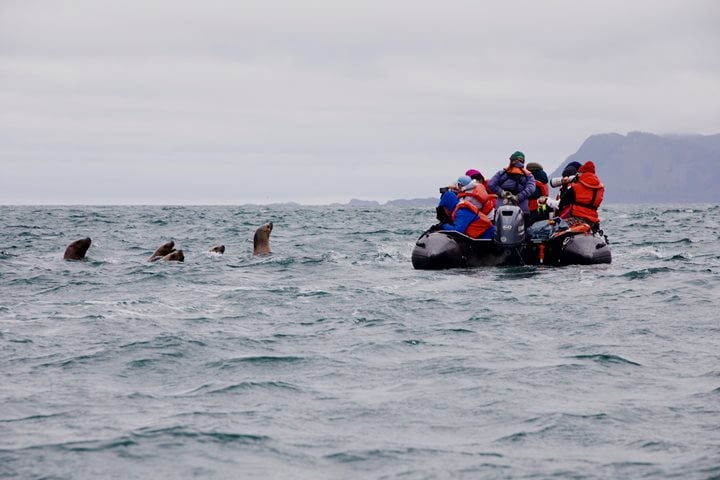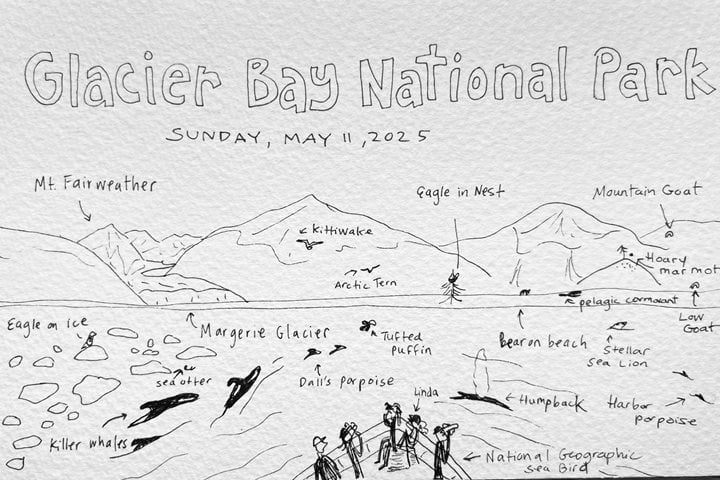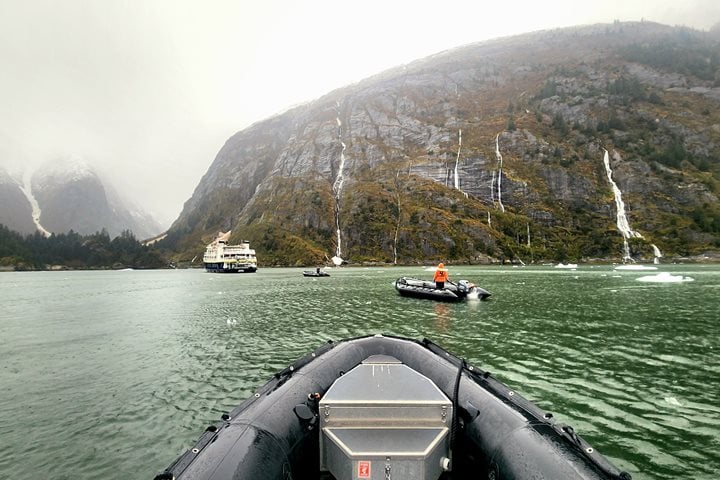The day dawned with strong winds and choppy seas, persistent rain, damp cold, and was ‘colored’ by two shades of gray…no blacks or whites. But after we crossed the ‘Bar’ of Tracy Arm Fjord (the underwater remnants of the terminal moraine), the wind lessened, the seas became flat, the rain stopped, the cold was ‘warm,’ and there were more shades of gray with a hint of green. We passed several textbook examples of hanging glaciers interspersed among towering cliffs and rock faces resembling abstract paintings. The Chief Mate positioned us within feet of the Hole-in-Wall and Icy waterfalls. The volume of cascading water was most impressive and inspired several hundred photographs. As we continued up the fjord, ice from the South Sawyer Glacier drifted by, increasing in size and number as we drew closer and closer.
After lunch, we departed for Zodiac cruising among the brash ice, growlers, bergy bits, and small icebergs to view the glacier from a safe distance. The rugged glacier face had veins of blue interspersed with patches and columns of white. The scene was enhanced by cloudy conditions that eliminated harsh shadows. We were honored and awed by several calving events, hearing the low ‘boom’ seconds after the ice crashed, watching the explosion of water, and experiencing a gentle rocking as the swells rolled under our Zodiacs several minutes later. One of the guests estimated the size of the largest calved ice, then extrapolated a weight of 8,000 tons! Many harbor seals rested on icebergs very close to the glacier face and calving ice but were quite blasé about the watery turmoil near their icy ‘bed.’ While those seals slept, several juvenile seals actively swam around and occasionally poked their heads out of the water to investigate this strange sight of orange things crowded together on a small gray ‘iceberg.’
We returned to National Geographic Sea Bird to enjoy hot chocolate before cocktail hour and recaps. A great day and more adventures to experience tomorrow.

